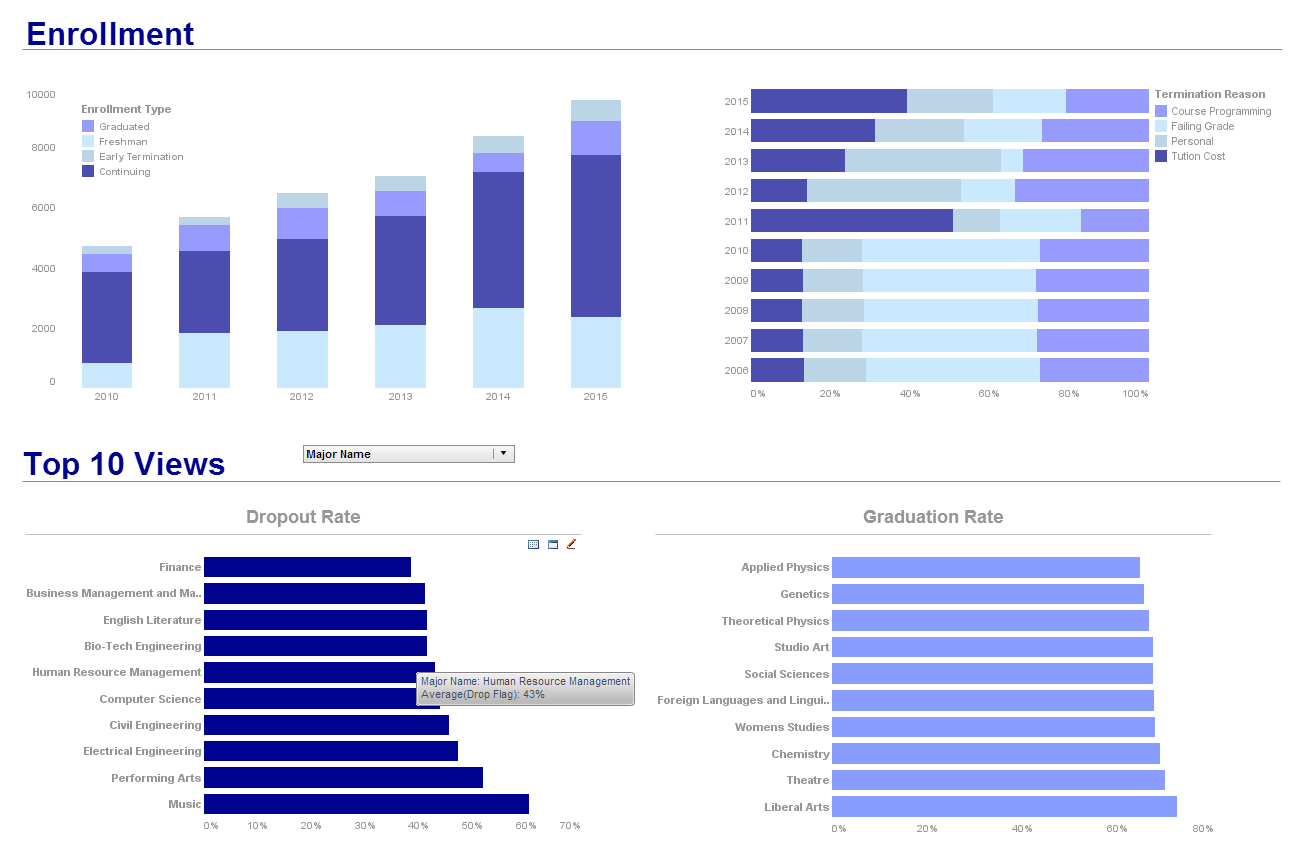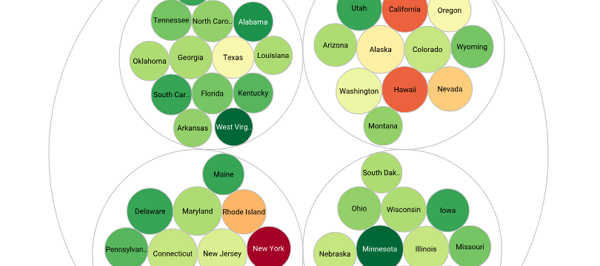Balanced Scorecards for Performance Management
The balanced scorecard is a strategic planning and management system that is used in business and industry, government, and nonprofit organizations worldwide to align business activities to the vision and strategy of the organization, improve internal and external communications, and monitor organization performance against strategic goals. The Balanced Scorecard (BSC) can be used by managers to keep track of the execution of activities by the staff within their control and to monitor the consequences arising from these actions.
The design of a Balanced Scorecard is about the identification of a small number of financial and non-financial measures and attaching targets to them, so that when they are reviewed it is possible to determine whether current performance 'meets expectations'. The idea behind this is that by alerting managers to areas where performance deviates from expectations, they can be encouraged to focus their attention on these areas, and hopefully as a result trigger improved performance within the part of the organization they lead.
Different Perspectives of A Balanced Scorecard
- Learning
- Growth Perspective
- Business Process Perspective
- Customer Perspective
- Financial Perspective
The Modern Balanced Scorecard
The balanced scorecard has evolved from its early use as a simple performance measurement framework to a full strategic planning and management system. The “new” balanced scorecard transforms an organization’s strategic plan from an attractive but passive document into the "marching orders" for the organization on a daily basis. It provides a framework that not only provides performance measurements, but helps planners identify what should be done and measured. It enables executives to truly execute their strategies.
Balanced Scorecard Performance Management: Why InetSoft?
InetSoft makes performance management tools that are easy to deploy and easy to use, and when combined with their unique data mashup capabilities, you get unified views of organizational performance and maximum self service.
InetSoft's small-footprint, Web-based application provides a streamlined, intuitive interface for all users. As an innovator in reporting software since 1996, InetSoft has pioneered the evolution from static reporting towards interactive visualization of data via dashboards.
A Mortgage Lender's Transformation with Scoreccards Built with InetSoft's StyleBI
FHFS operated across multiple departments, each tracking its own performance indicators. The Loan Acquisition team struggled with inconsistent approval rates, the Risk Management division lacked real-time insights into delinquency trends, and the Investor Relations department needed better visibility into portfolio performance.
CEO Angela Carter knew that without a unified approach to decision-making, inefficiencies would continue to plague the organization. That's when she turned to InetSoft's StyleBI app, a powerful business intelligence tool capable of designing balanced scorecards—a structured framework for tracking key performance indicators (KPIs) across multiple departments.
The Solution: A Data-Driven Overhaul
Angela assembled a task force led by Marcus Lee, FHFS's chief data strategist. Their mission: implement balanced scorecards using StyleBI to bring clarity and alignment to FHFS's operations.
1. Loan Acquisition: Streamlining Approvals
The Loan Acquisition team's scorecard focused on:
-
Approval Rate – Tracking the percentage of loans accepted from primary lenders.
-
Loan Quality Index – Measuring the risk profile of acquired loans.
-
Processing Time – Monitoring the speed of loan acquisitions.
Using StyleBI's data mashup capabilities, Marcus integrated real-time metrics from lender submissions. The dashboard displayed alerts when approval rates dropped or processing times exceeded benchmarks, allowing managers to intervene before bottlenecks formed.
2. Risk Management: Predicting Delinquencies
The Risk Management division needed insights into borrower behavior. Their scorecard included:
-
Delinquency Rate – Tracking late payments across loan portfolios.
-
Foreclosure Probability – Predicting risk based on economic indicators.
-
Credit Score Trends – Analyzing borrower profiles over time.
StyleBI's interactive dashboards allowed analysts to drill down into data, revealing patterns in delinquency rates. They discovered that adjustable-rate mortgages had a higher risk of default in certain economic conditions, prompting a policy shift toward fixed-rate loan acquisitions.
3. Investor Relations: Enhancing Transparency
The Investor Relations department faced challenges in communicating portfolio performance. Their scorecard focused on:
-
Yield on Mortgage-Backed Securities – Measuring returns for investors.
-
Market Liquidity Index – Assessing the availability of funds for new acquisitions.
-
Investor Sentiment Analysis – Tracking engagement and feedback.
StyleBI's threshold-based alerts flagged securities with declining yields. By adjusting portfolio allocations and enhancing transparency, the team improved investor confidence, leading to a 12% increase in institutional investments.
The Impact: A Unified Vision
Within months, FHFS transformed into a data-driven powerhouse. Departments no longer operated in isolation—each team's scorecard fed into a company-wide dashboard, providing leadership with a holistic view of performance.
Angela watched as loan processing efficiency increased by 18%, delinquency predictions became 30% more accurate, and investor engagement improved significantly. FHFS wasn't just facilitating mortgage liquidity anymore—it was harnessing data to drive smarter financial decisions.
The Future: Scaling Innovation
With StyleBI's success, FHFS expanded its use of predictive analytics, forecasting housing market trends based on economic shifts. They even explored AI-driven fraud detection, ensuring loan integrity in an evolving financial landscape.
As Angela stood in the boardroom, reviewing the latest performance metrics, she smiled. FHFS had embraced the future—not just in mortgage lending, but in the intelligence that powered it.


